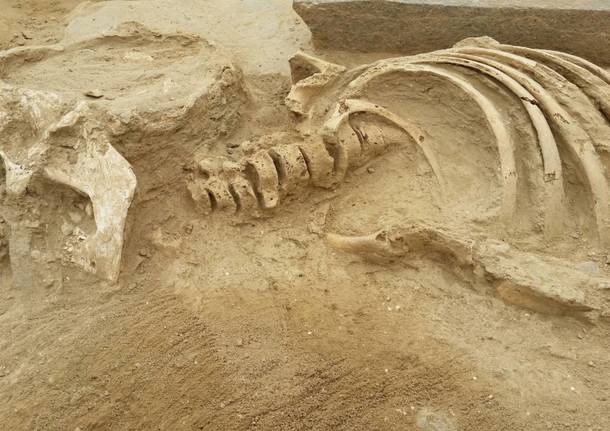Date: Tuesday, 04 June 2019

The important archaeological excavation of Adulis in Eritrea told by those who have been there.
A conference, to present the results that emerged from the excavation campaign that ended in March, is scheduled for Friday 7 June at 5 pm in the seminar room of Villa Toeplitz, home of the Insubria Local History Center.
Speakers are the archaeologist Angelo Castiglioni , Serena Massa, professor at the Catholic University of Milan, and Omar Larentis , PhD student of the Insubria University, which promotes the event in collaboration with the Research Center on the eastern desert (Cerdo) and with the Castiglioni Museum, where at the end of the conference a guided tour is proposed to the exhibition «Magie d'Africa. Religions, mysteries, symbols "that has just begun.
Adulis, the ancient port on the Red Sea where the Varese Alfredo and Angelo Castiglioni in 2011 started an important international cooperation project , once again is revealing important scientific and historical results.
This year also the University of Insubria participated , which joined the team that has been working on the site for years and includes the Ministry of Culture and Sports of Eritrea, the National Museum of Asmara and the regional Museum of Massawa. , the Catholic University and the Polytechnic of Milan, the Eastern University of Naples, the Pontifical Institute of Christian Archeology of the Vatican.
The innovations, above all of an anthropological nature , resulting from the excavation of some burials are the subject of the intervention of Omar Larentis, accompanied by a brief documentary and numerous images. The meeting is introduced by Angelo Castiglioni and Serena Massa , respectively the director and scientific coordinator of the mission.
The excavations of Adulis are revealing more and more information every year on this extraordinary city of the Horn of Africa , buried by a violent flood perhaps accompanied also by an earthquake. This hypothesis is suggested by the objects found whole in the layers of the ground and by the treasures of coins hidden in terracotta pots, abandoned in a hurry by the inhabitants to escape the catastrophe, as happened for Pompeii in the face of the advance of lapilli and the ashes of the eruption Vesuvius.